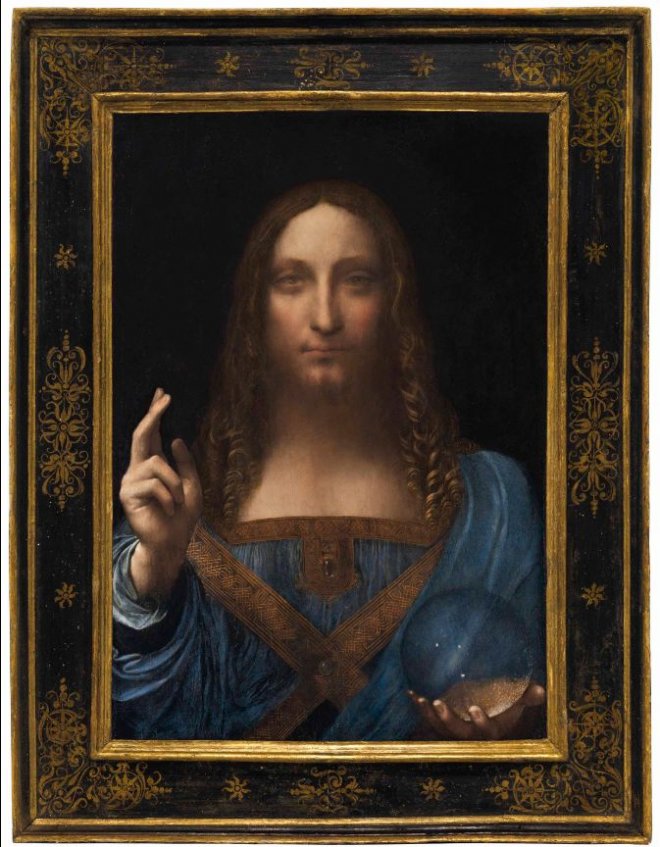
Leonardo da Vinci's 'last' painting, Salvator Mundi (Saviour of the World) broke all records as expected when it was sold for $450,312,500 at an auction on Wednesday. Including a buyer's premium, it has become "the most expensive painting ever sold at auction", according to the auction house Christie's.
The 'Male Mona Lisa' has broken the previous record of Picasso's 'Les Femmes d'Alger', which was sold for $179,364,992. Da Vinci's most expensive painting before this was 'Horse and Rider'. It was sold in 2001 for $11,481,865.
Salvator Mundi is hailed as "the greatest artistic rediscovery of the last 100 years", according to Christie's. It has attracted nearly 1,000 art collectors, dealers, advisors, journalists, onlookers during its exhibition at Rockefeller Center, with more people watching via live stream. After the auction was announced on October 10, almost 30,000 people have visited Christie's to catch a glimpse of the legendary painting, in Hong Kong, London, San Francisco and New York.
The auction was carried out of Christie's New York office and took only 20 minutes to conclude. The price quickly rose to $400 million and finally settled at $450 million. The identity of the buyer has not been revealed.
The painting's history
Salvator Mundi is one of the 16 surviving paintings of the Italian Renaissance painter Leonardo da Vinci. It depicts Jesus Christ with his right hand lifted in blessing and left hand holding a crystal orb, representing the world. The painting was rediscovered in 2005 after being out of sight for centuries. After that, it has been undergoing restoration and verification of authenticity.
The 16th-century painting inspired many imitations, of which 20 have been identified. The original was previously a part of the collection of England's King Charles I, following which it disappeared for almost two centuries. In 1900, Sir Charles Robinson acquired it for London's Cook Collection. However, it was then credited to Bernardino Luini.
The priceless painting was auctioned in 1958 for a mere 45 pounds, says CNN. It again disappeared for half a century and was finally spotted by art collector Robert Simon and dealer Alexander Parish.
The restoration and verification process
Observers initially thought that the painting was another imitation before Simon had a hunch that it was an original Leonardo. However, artists had added several layers of paint to it throughout the ages, perhaps to modernise or refresh it. Six years of restoration work by Dianne Dwyer Modestini, a professor of paintings conservation at New York University, restored 'Saviour of the World' to its original state.
A series of tests proved the painting's authenticity, including a different thumb position, X-ray findings of a pentimento, a trace of an earlier painting beneath the surface and the fact that it was painted on walnut with translucent paint, similar to the artist's staple style.
The painting's controversies
The painting was sold in 2013 by Simon, Parish and Warren Adelson for $80 million. The buyer, Swiss businessman and art dealer Yves Bouvier resold it the next year to Russian billionaire Dmitry Rybolovlev for $127.5 million. This led to legal suits and countersuits between Rybolovlev, Bouvier and the sale intermediary Sotheby's. The dispute, called the Bouvier affair, is still ongoing.








